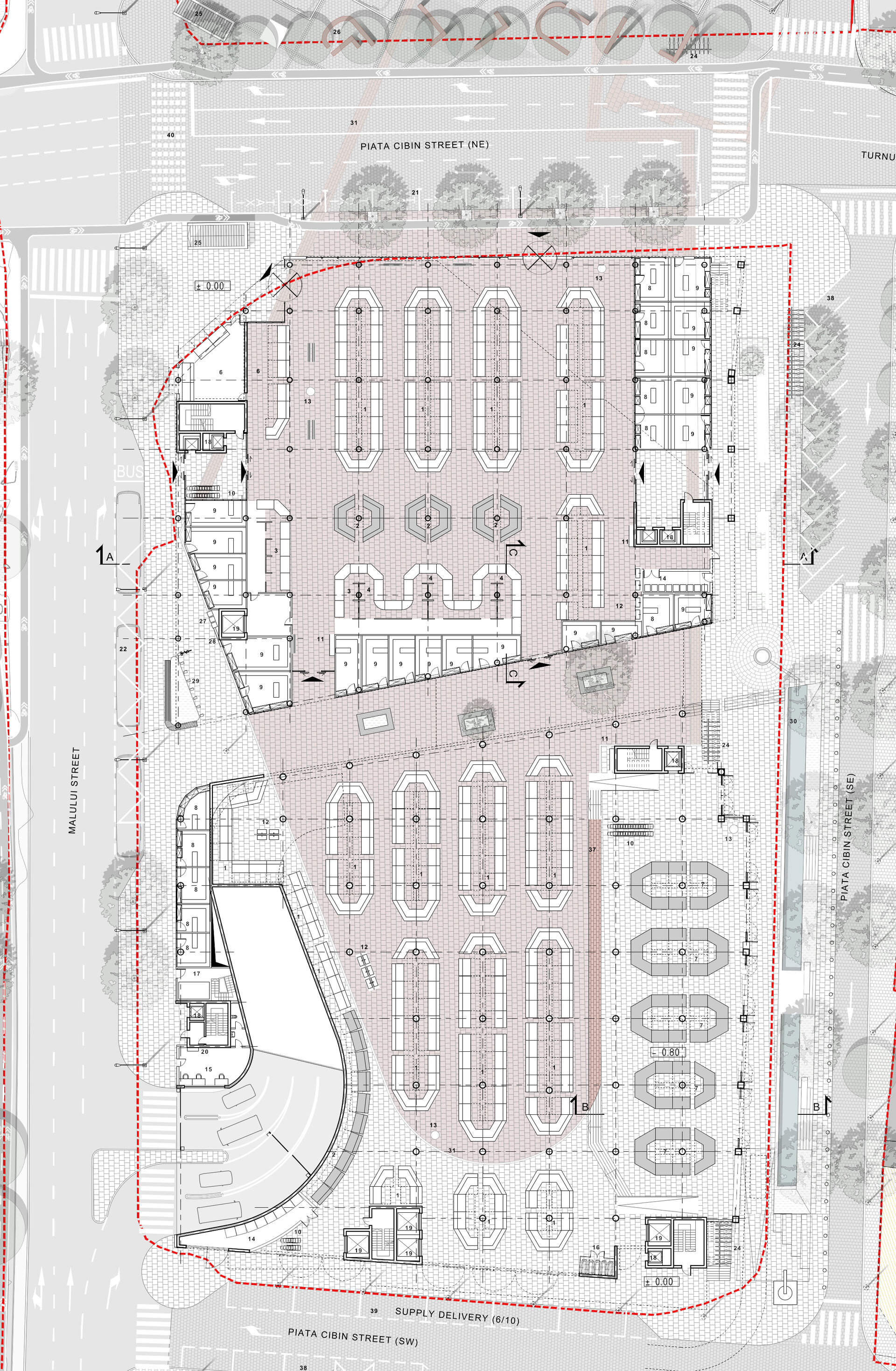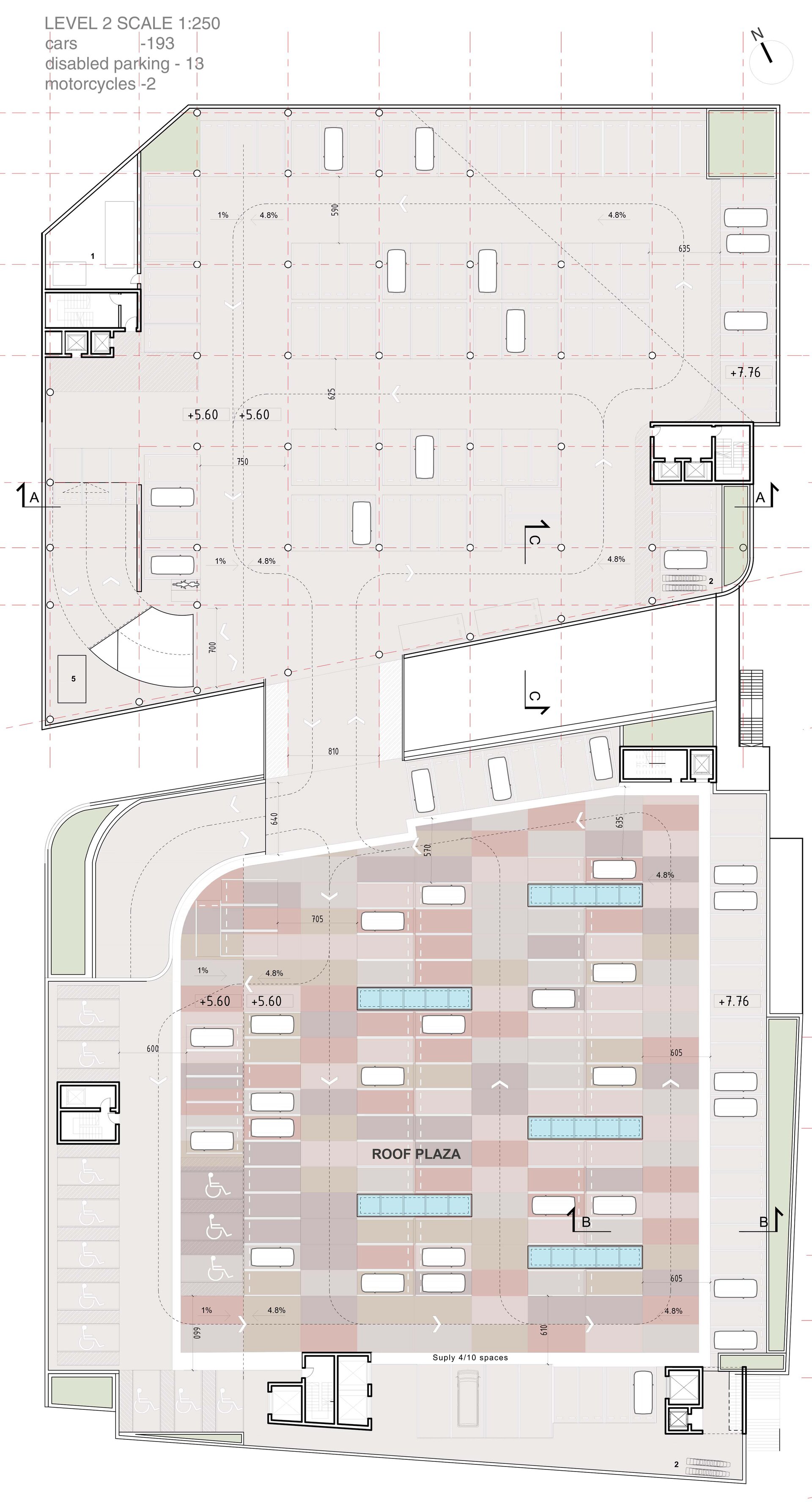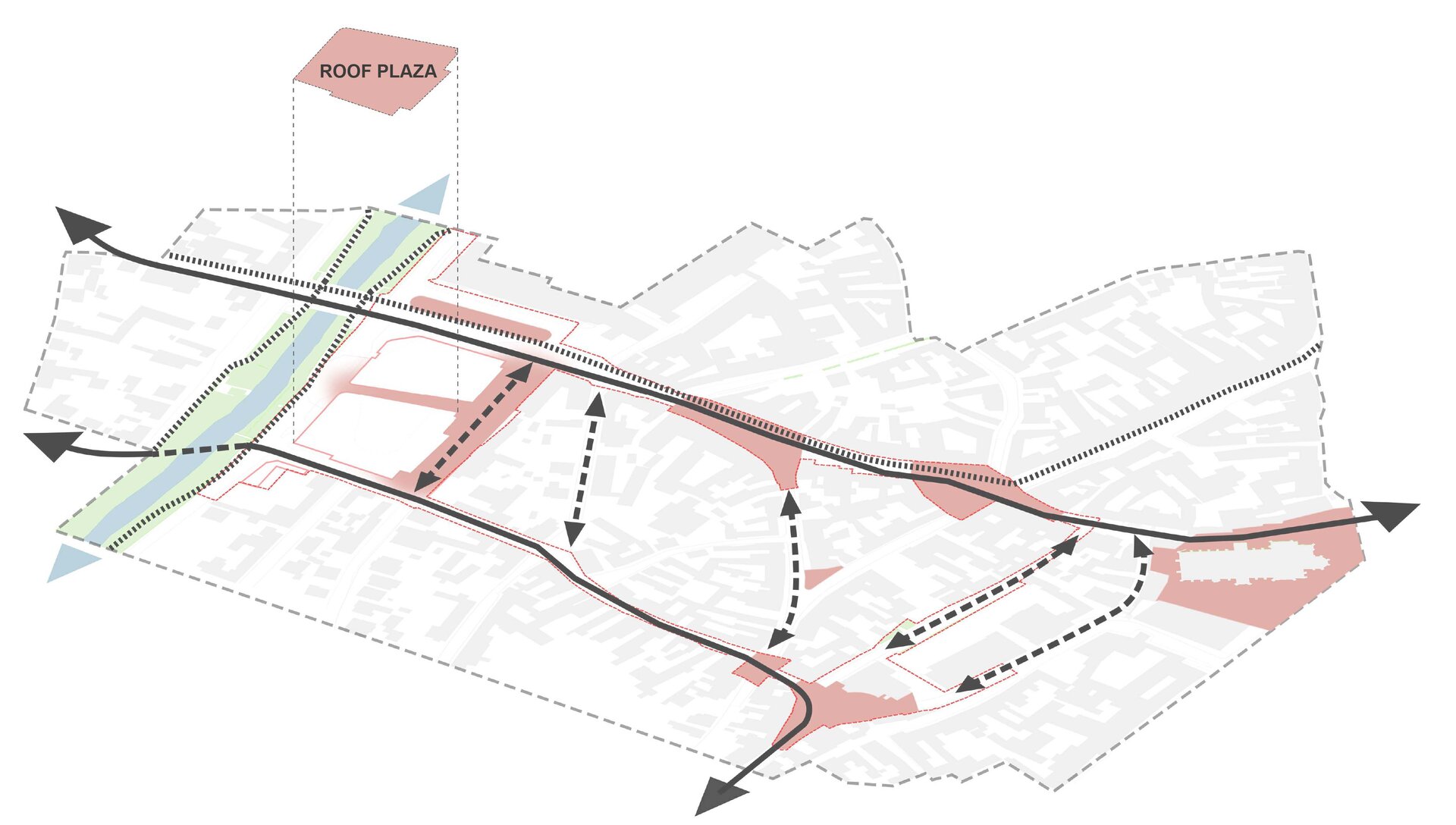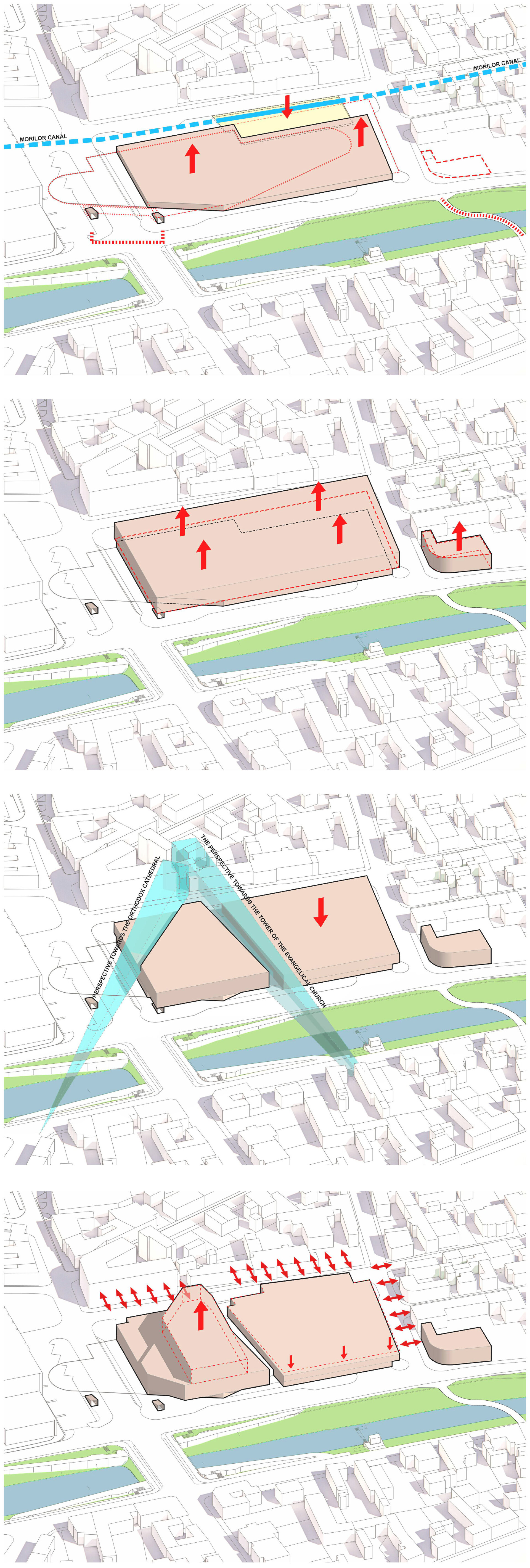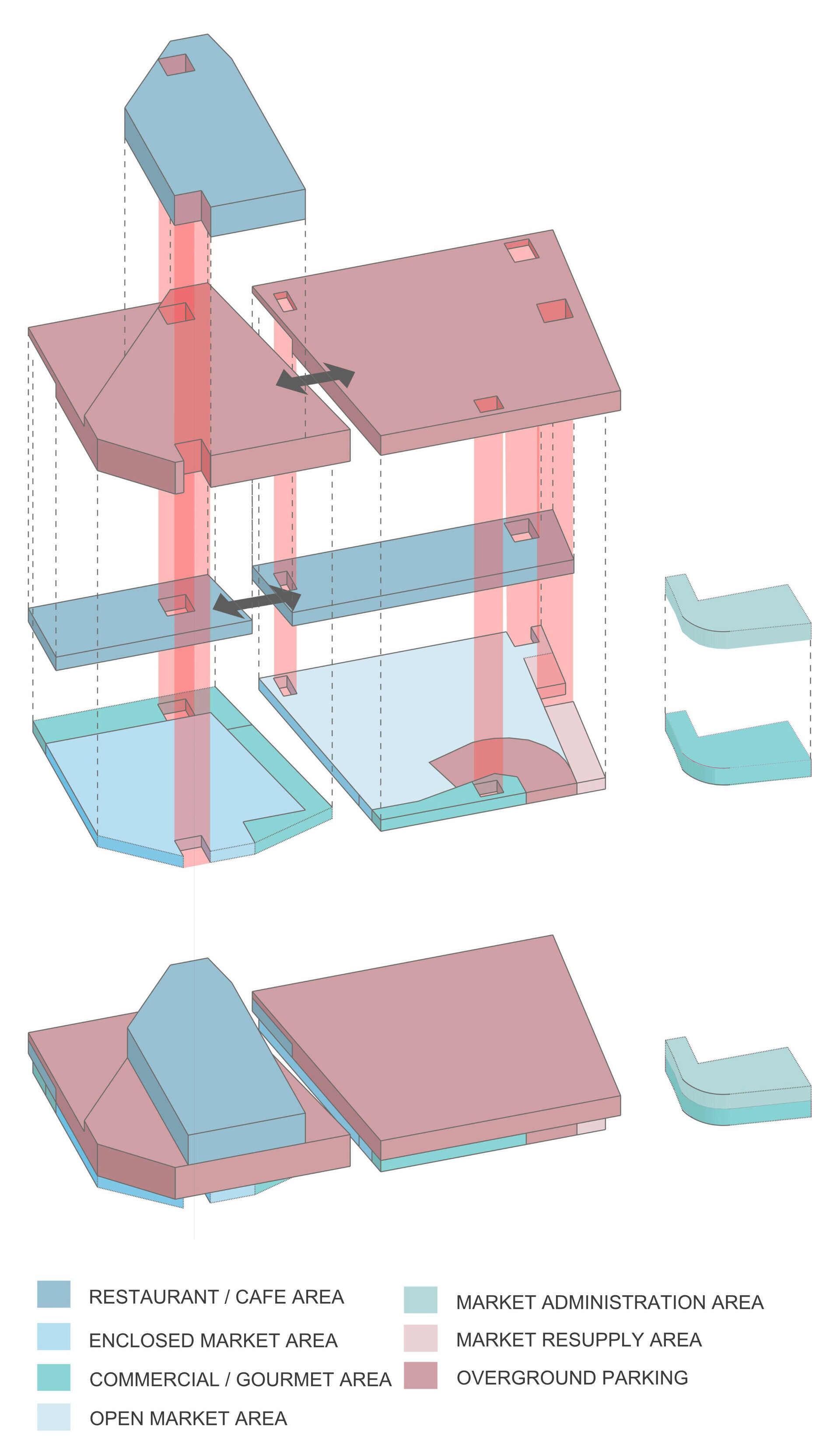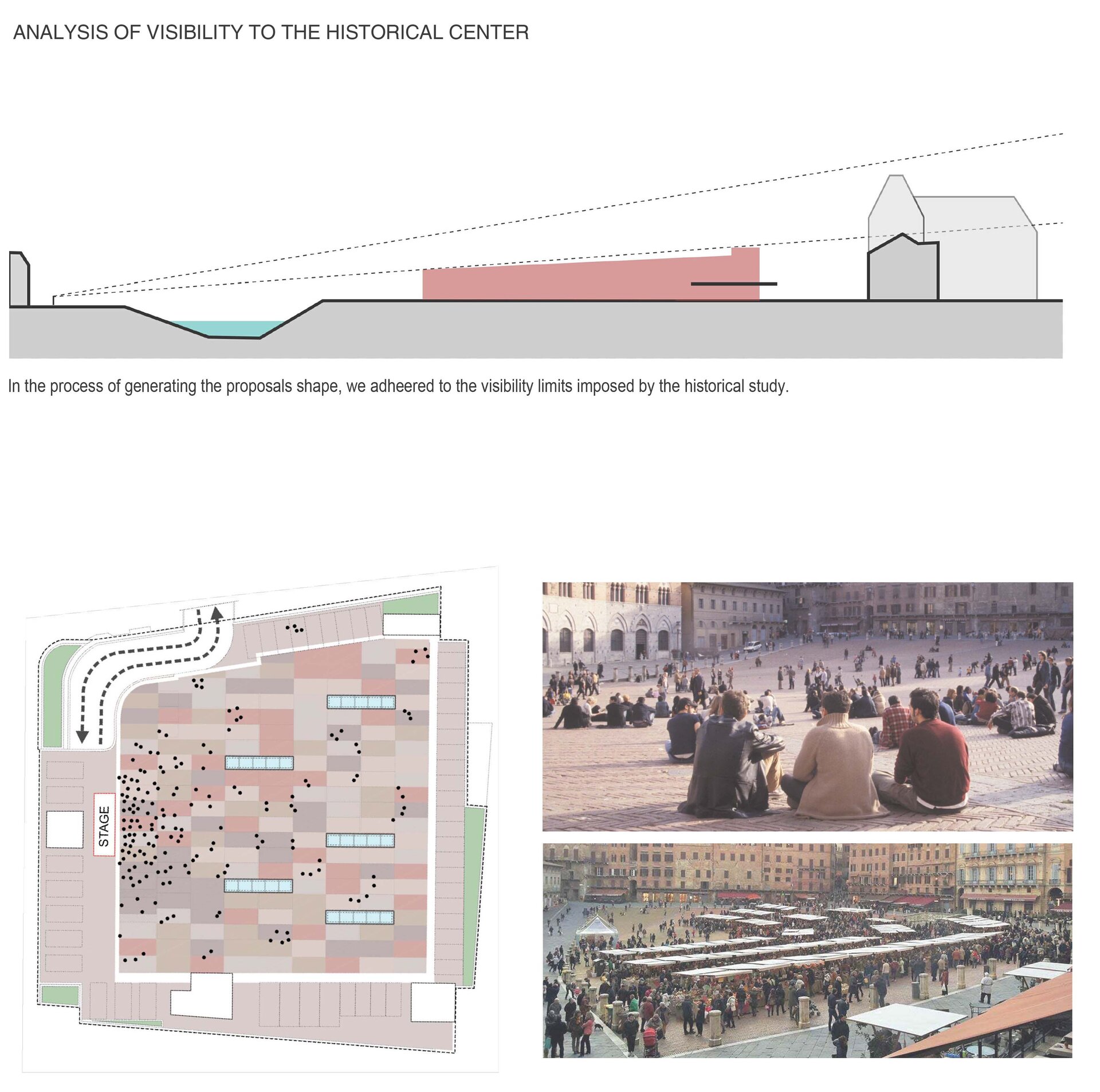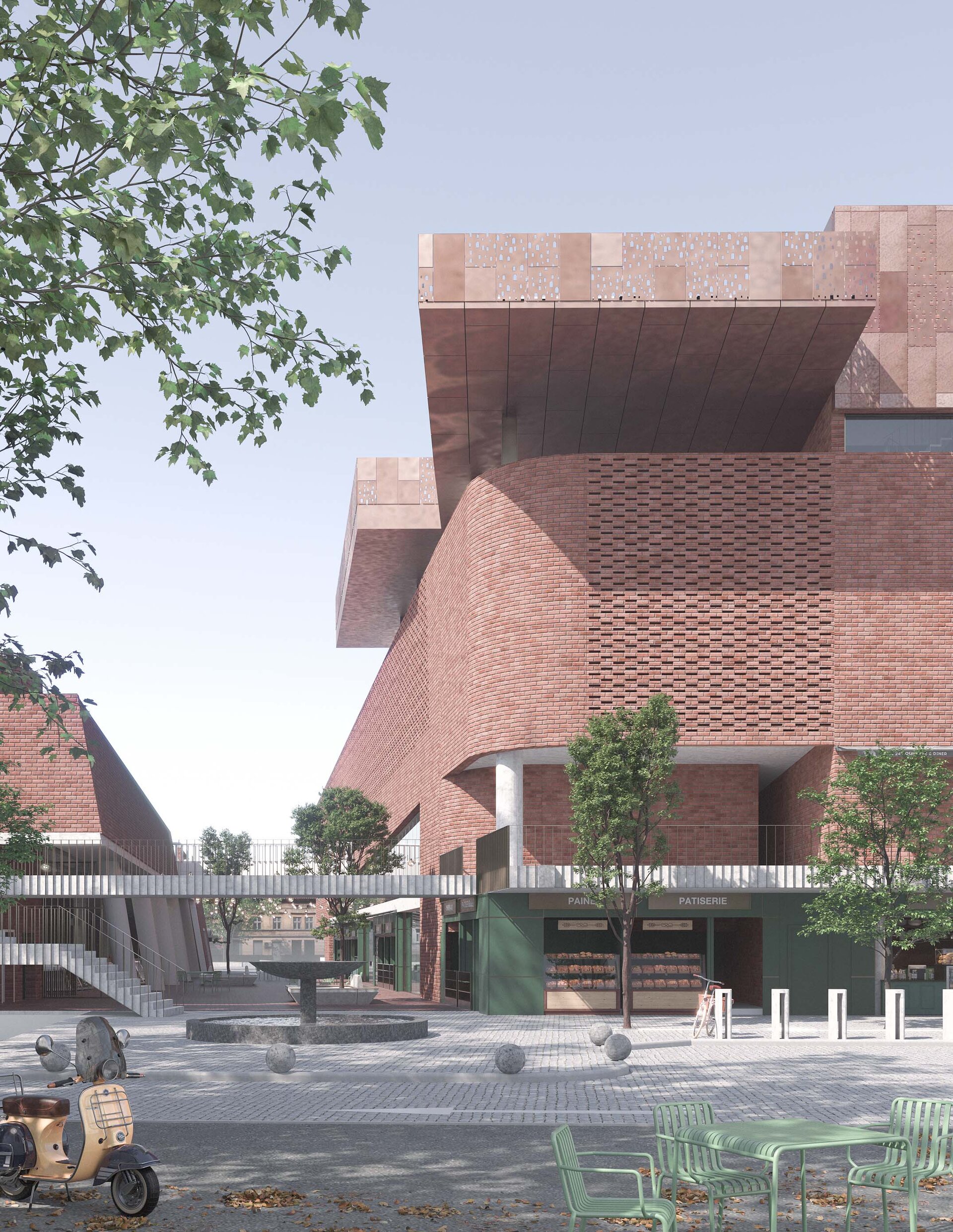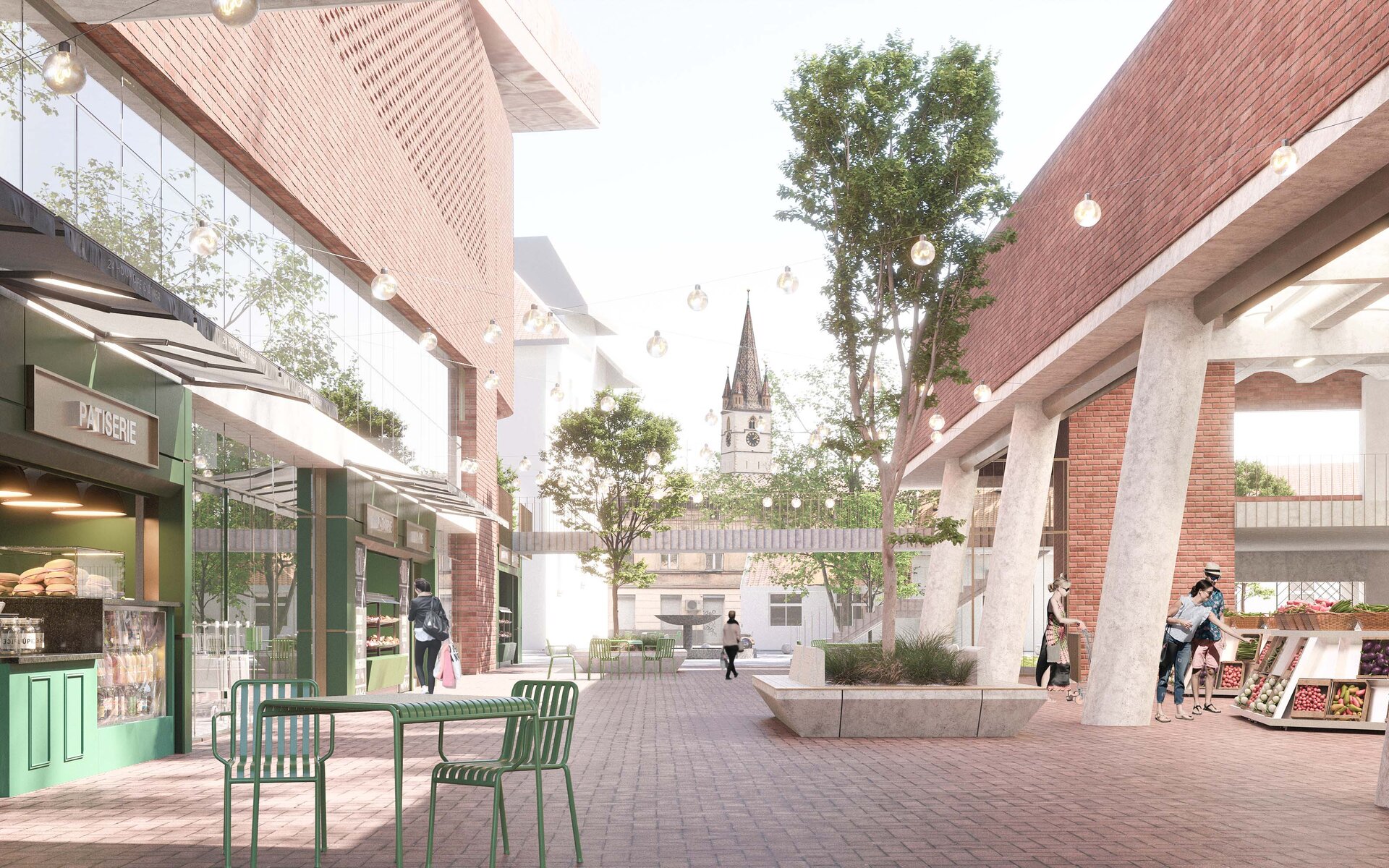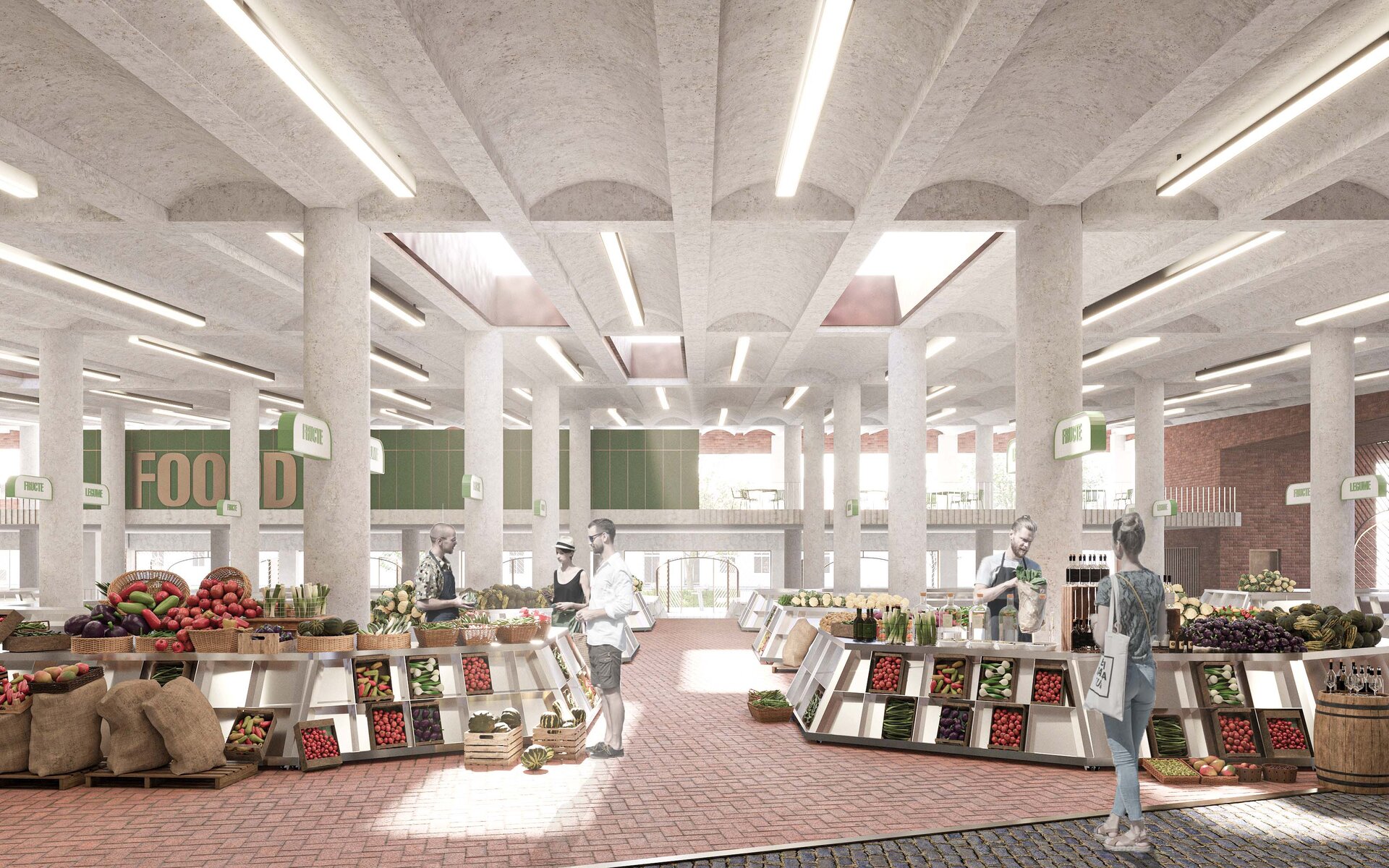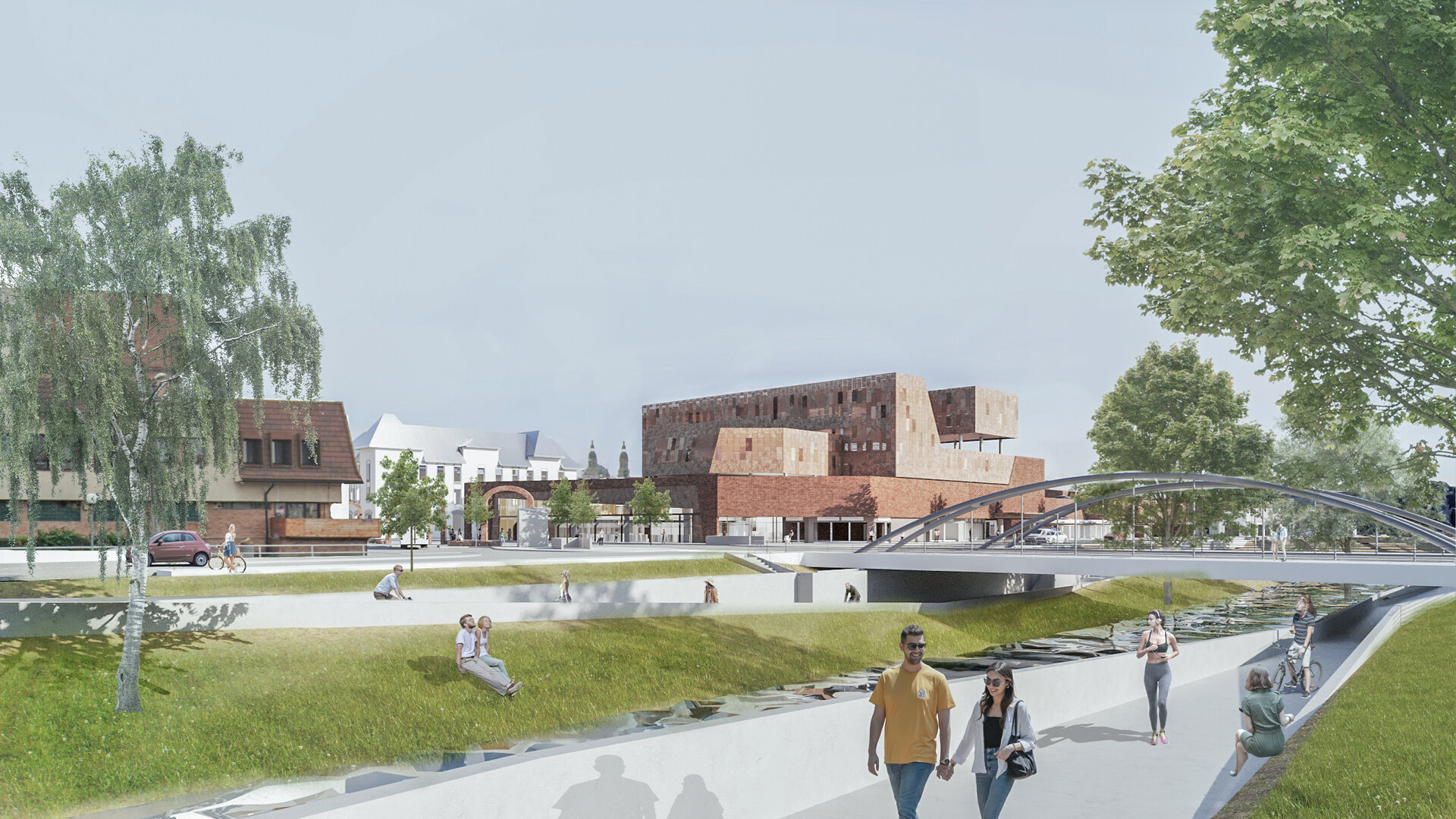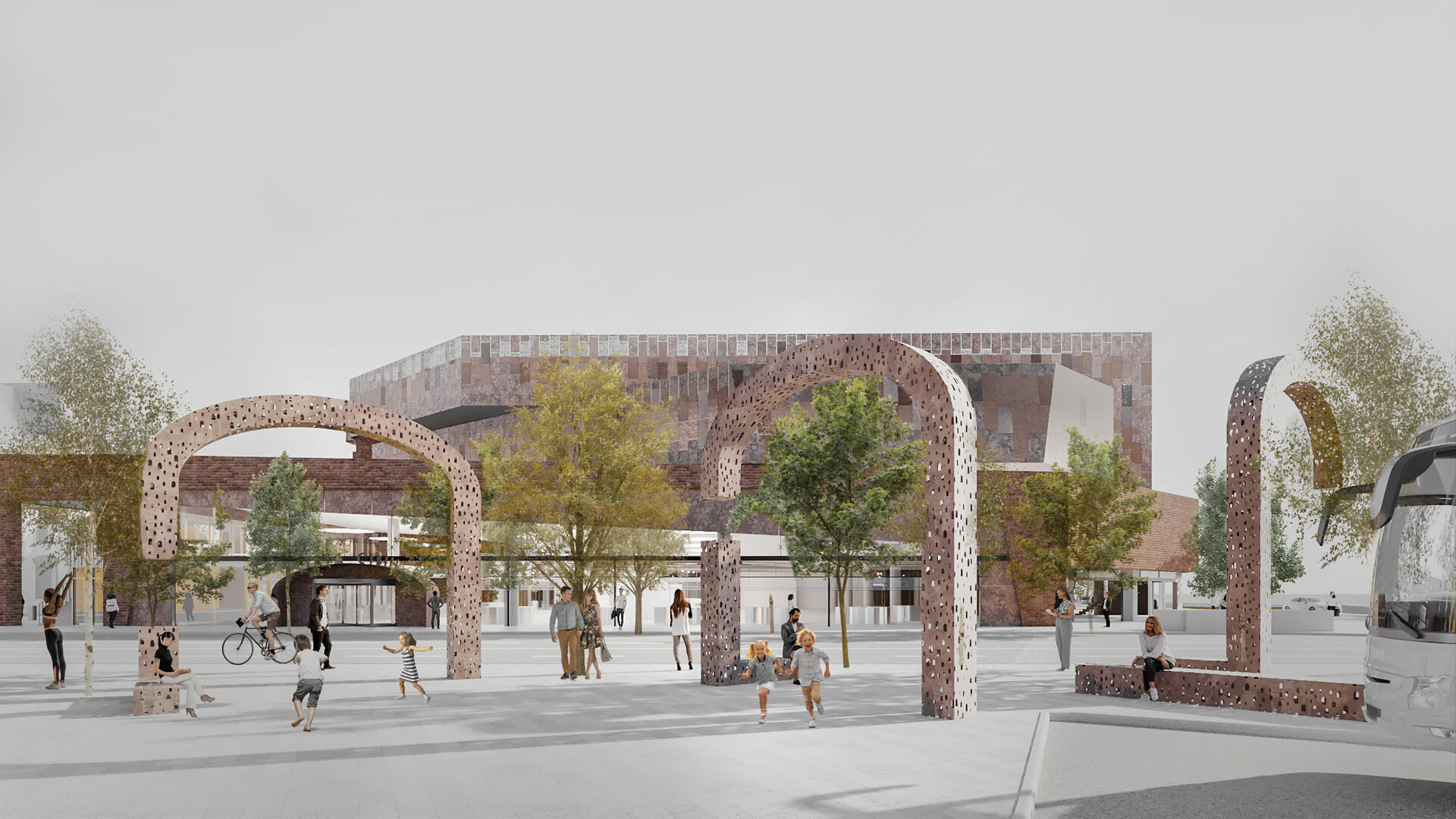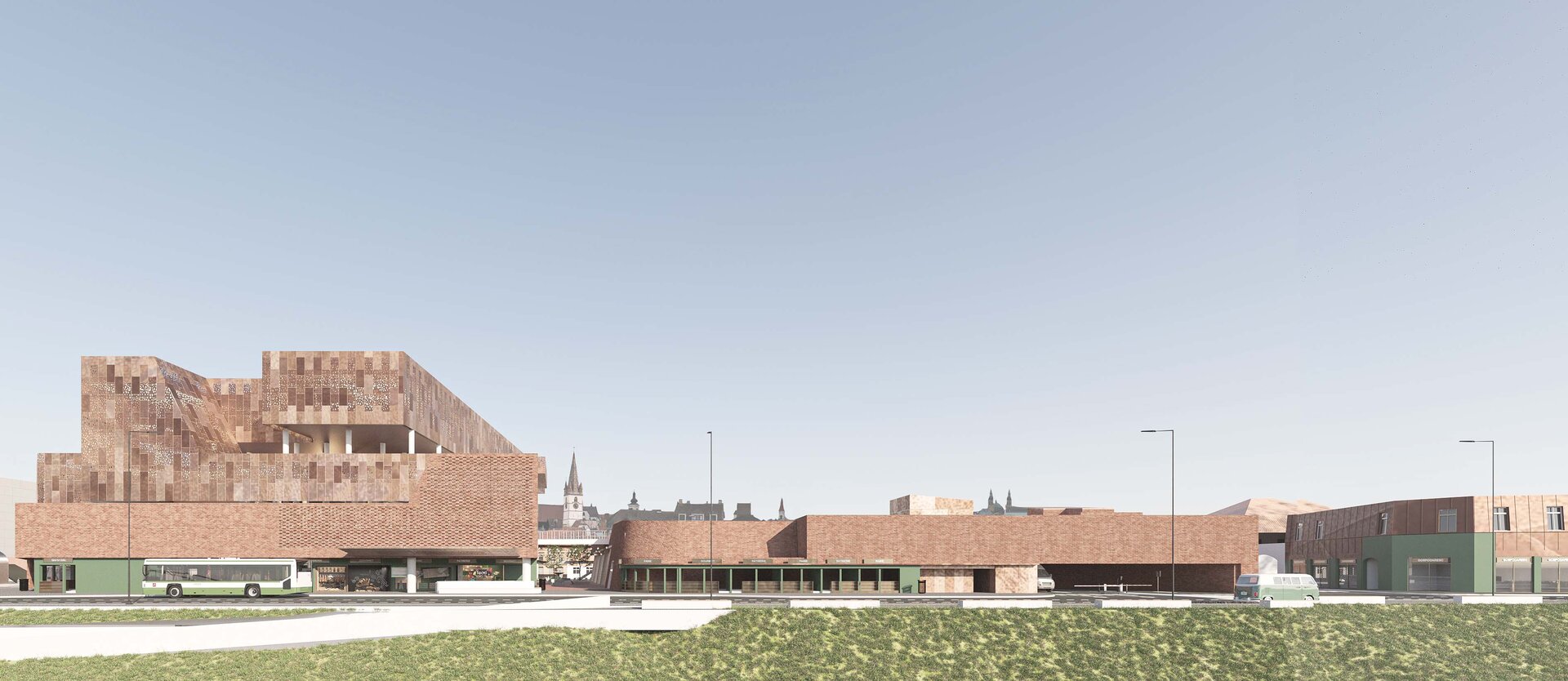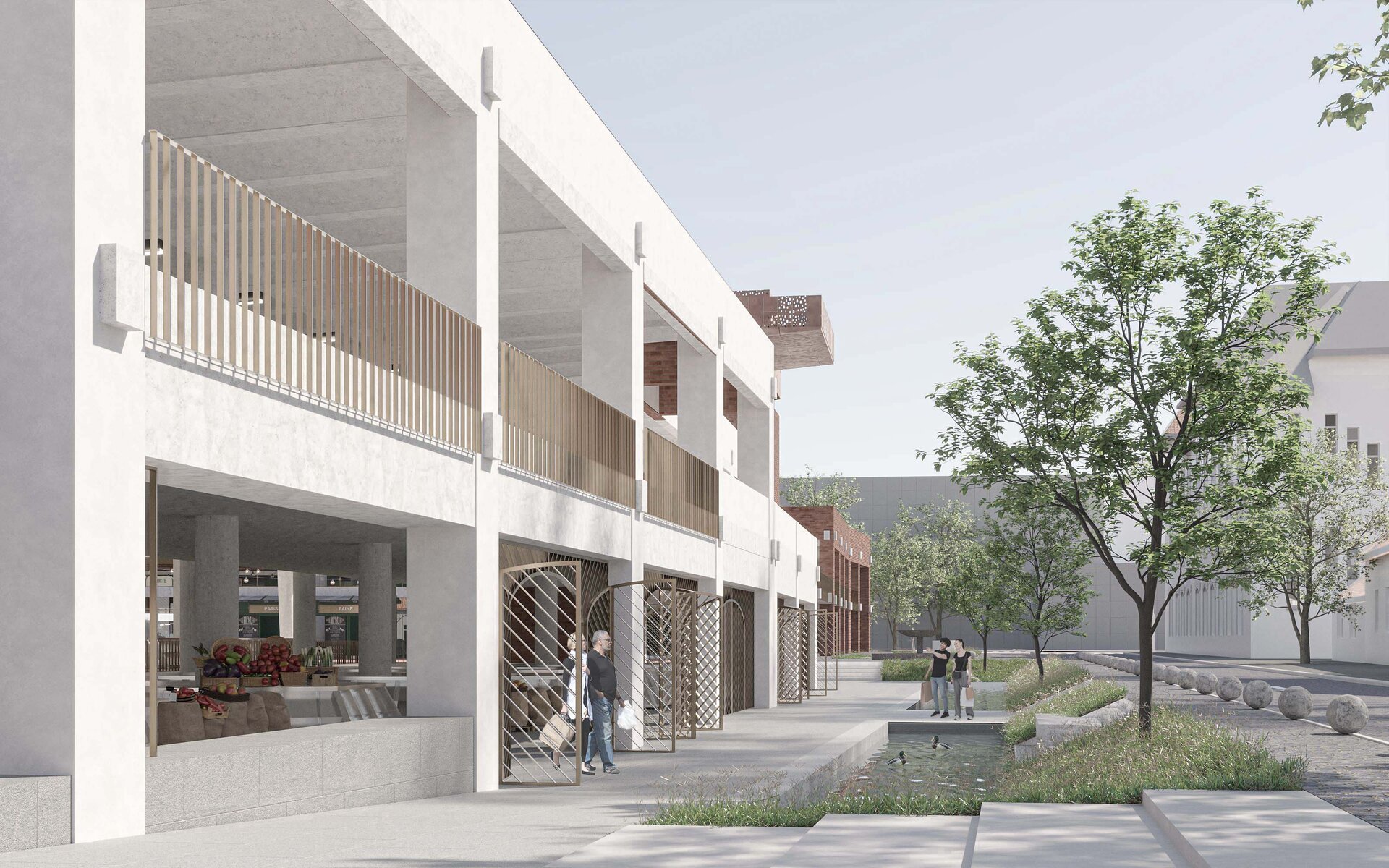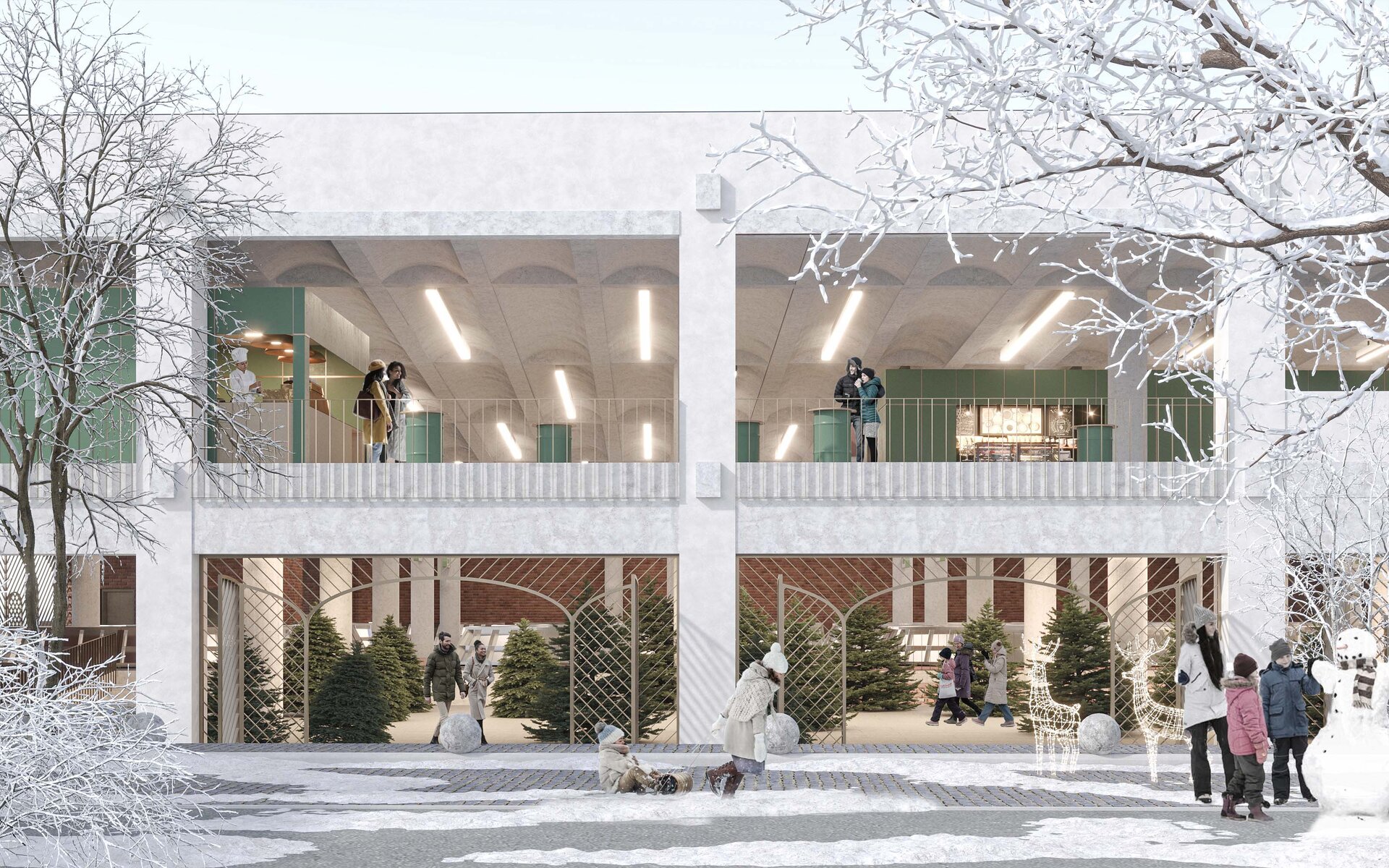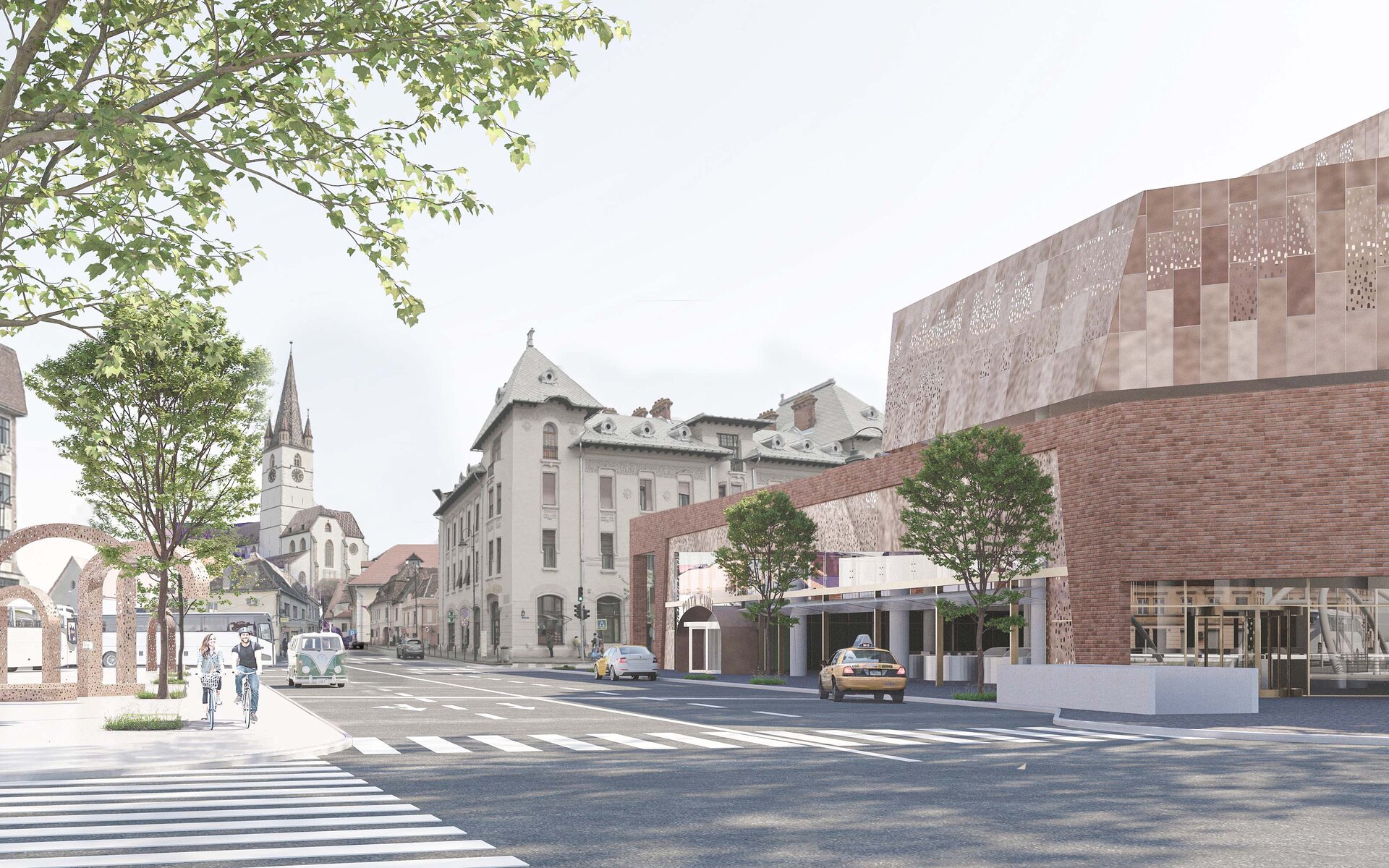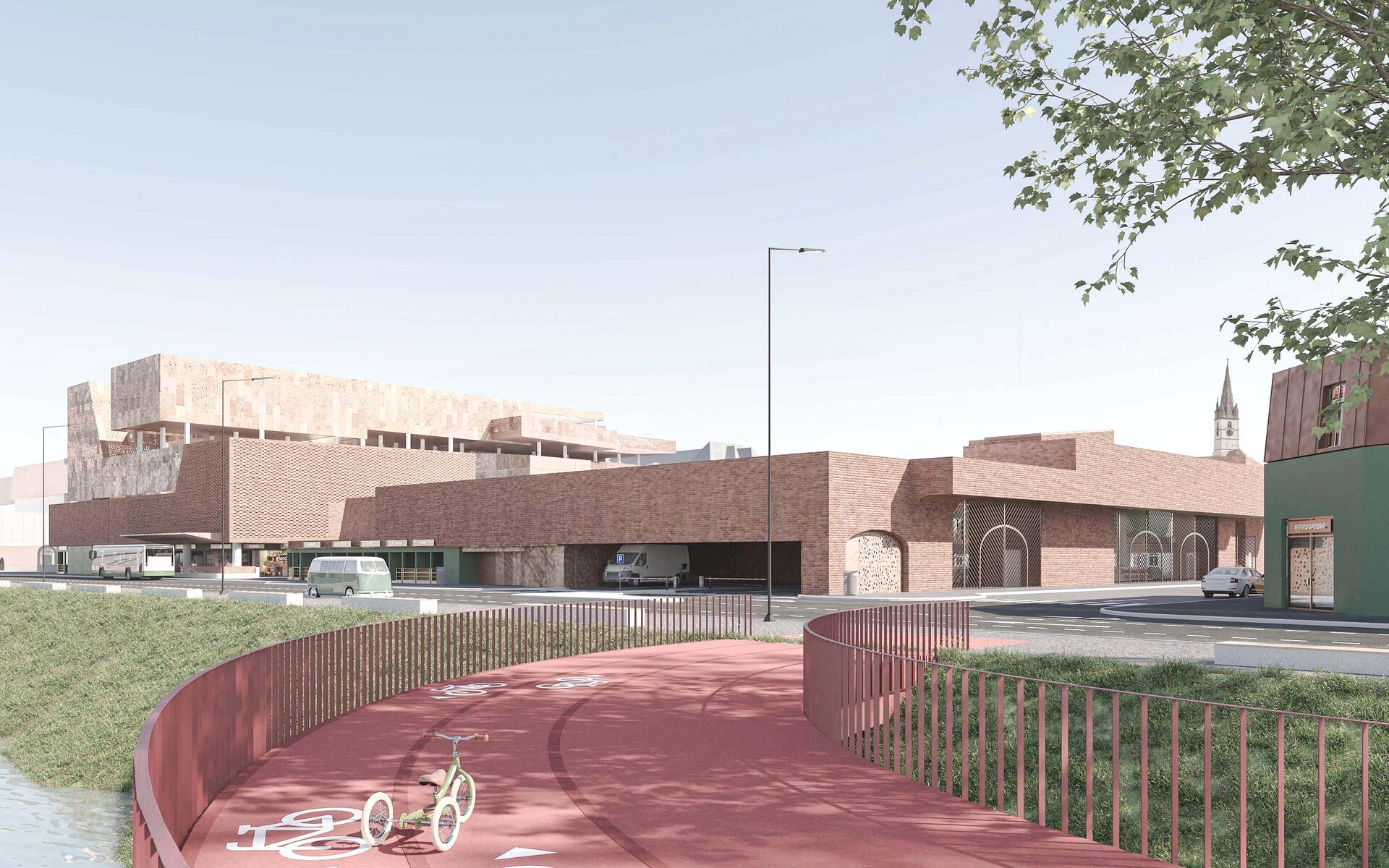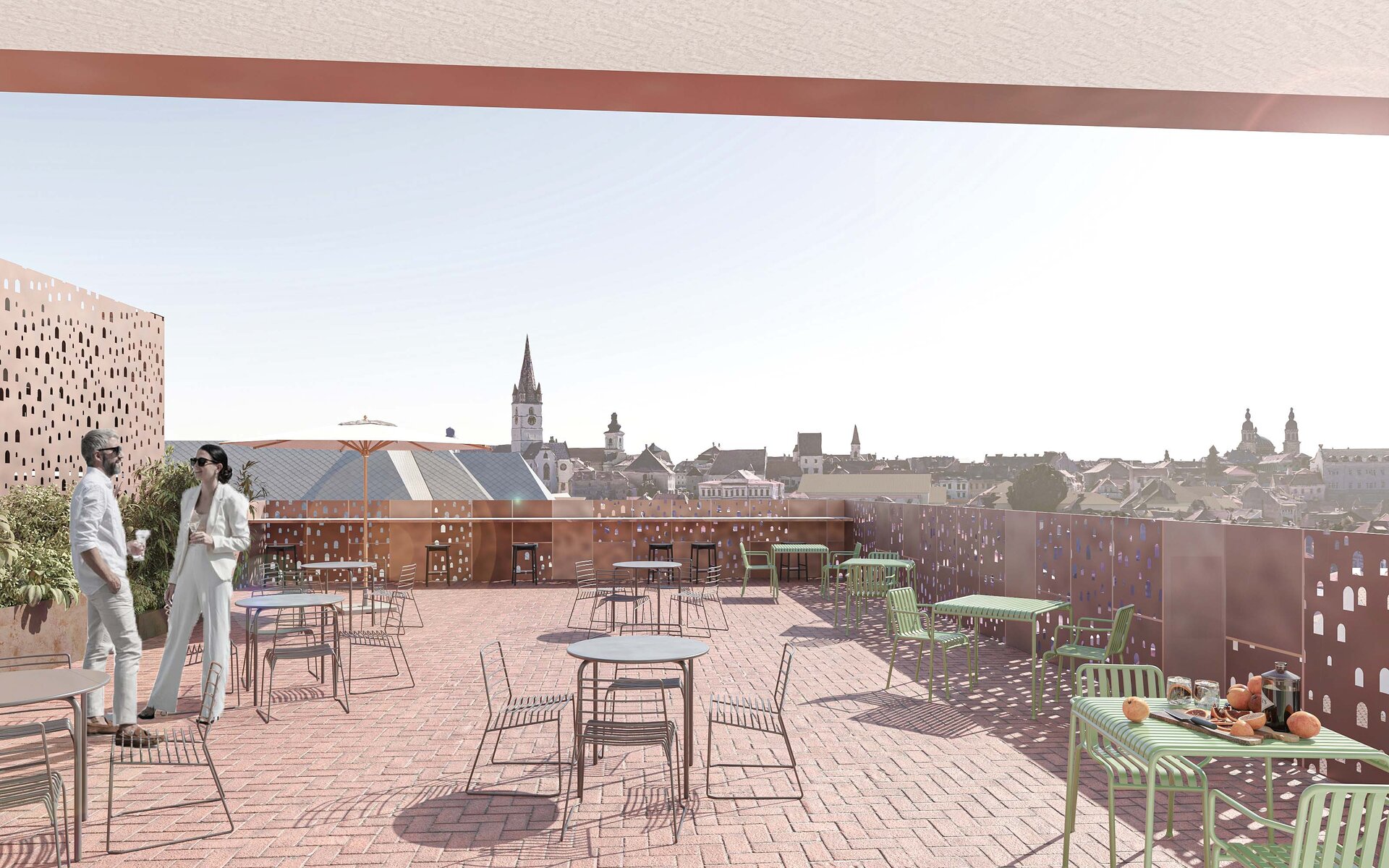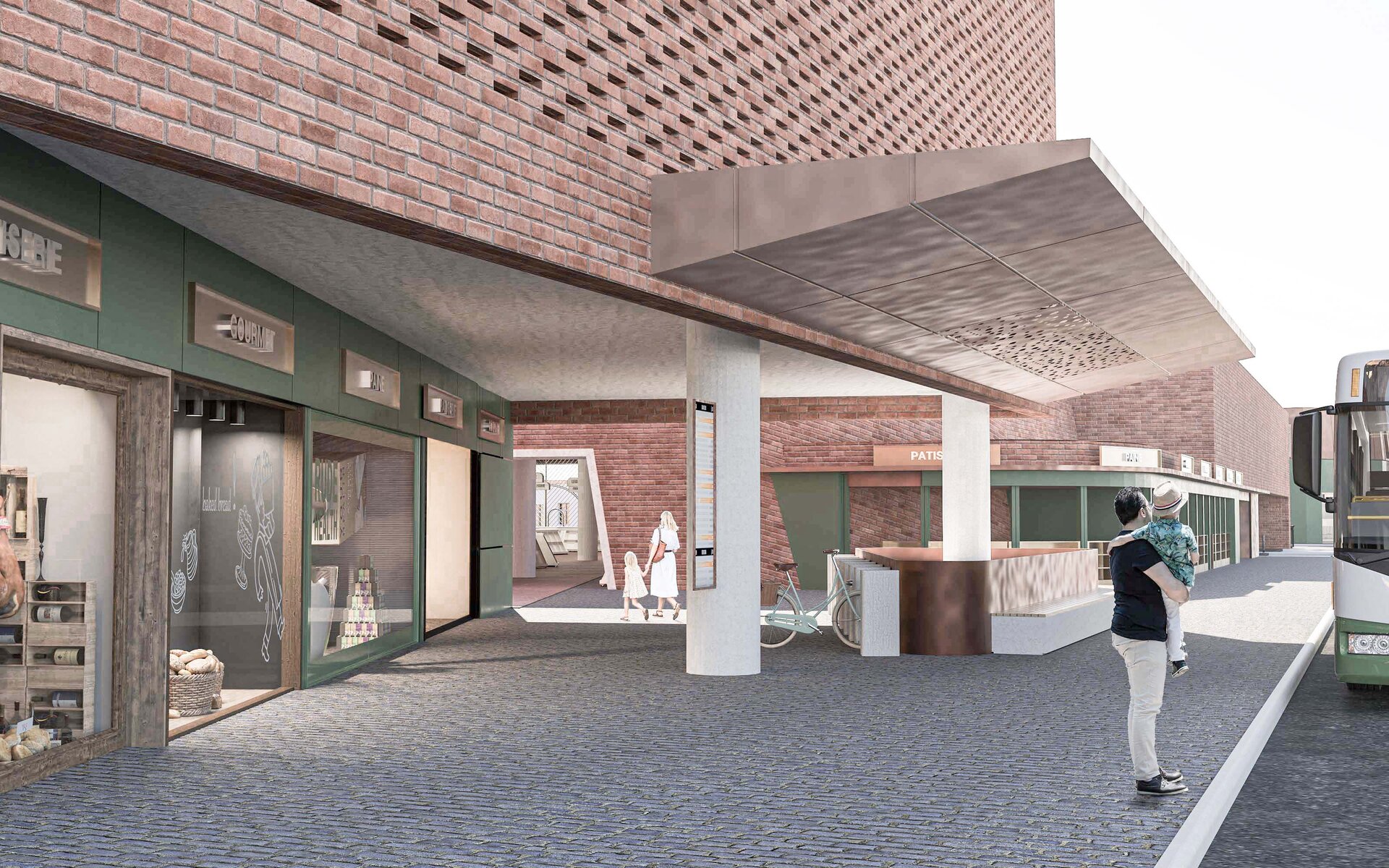
Cibin Market
Authors’ Comment
We thought of the parking floor on the roof of the market at elevation 5.50-776 as for a medieval market.
Access to the parking lot on the north building would work unimpeded and the advantage of having the freight elevators available at this level makes the supply very easy.
The car ramp was designed to allow the access of goods transport vehicles, with a specially designed space for unloading goods.
The site is positioned at the border of the former fortress, practically in the area that separates the cultural areas, the defense and protection area.
"The Tailors' Tower" was among the most important access gates and had the role of separation and filtration. With the passage of time and the evolution of society, the bastion as an element of defense became useless and then the tower with the gate as an element of separation also fell into obsolescence.
. The gate for this space was a symbol that went through various semantic valences:
- Barriers and boundaries: The gate can be perceived as a physical barrier that delimits and separates two distinct spaces. In this sense, it can symbolize the boundaries, limits and restrictions that exist in our lives.
- Blessing and protection: the gate can be considered as a form of blessing or protection. It can symbolize a path to safety, refuge, or a better world. Sometimes the gate can be associated with religious or spiritual symbols.
- Connection and links: The gate can symbolize the connection between two places, two people or two different worlds. It can represent the connections and relationships we have with others or with the environment. The gate can mean that there is an opportunity to connect and interact with something or someone new.
Now the market is a symbol of connection, the elimination of barriers and inclusion - a symbol of the evolution of society.
The route to the access gate to the citadel was through the area marked with "1", which in our proposal corresponds to the bus disembarking area / the entrance gate for tourists to the city. We used the theme of the gate as a suggestive element for the history and character of the place.
We wanted to create a square dominated by an ensemble of urban functional sculptures whose theme carries an element of separation/connection.
The Bastion Museum, which could be built underground in this area to be able to expose the ruins of the bastion's foundations, would have an attractive role in the area and could house exhibitions about the history of the city about the multitude of national and world firsts (in chemistry, aviation, medicine , literature, art, construction, etc.) that took place in Sibiu but also as a tourist information point.
We propose that in the future the Siemens complex buildings will go through a reconversion process into a mix of functions such as hotel, market, museum, craft workshops, vertical farm, which together with Piata Cibin will become a pole of commercial, cultural and tourist interest.
Public Architecture
- Together... Educational centre in Busua
- Outdoor gathering space
- The Rehabilitation of the Chisinau National Philharmonic
- Help Campus
- Lucian Blaga Highschool, Cluj-Napoca
- Connections with Dambovita. Cultural Center and Museum
- Data Center
- Museum of Emotions
- Urban Regeneration of the Cibin Market Area, Sibiu
- In-between echoes of extinction
- Events center
- Urban regeneration of Gara de Nord Square through rehabilitation and functional conversion of Dunărea Hotel
- Social center for the elderly
- Chapel
- Cibin Market
- Rehabilitation, Restoration, Consolidation and Expansion Secondary School in Huși, Vaslui County
- Modernization, rehabilitation and expansion of the Tineretului stadium, Brașov municipality
- Landscape design by the lake - CUG
- Alternative Togetherness
- Offices and Commercial Spaces on Puțul lui Zamfir Street
- School Campus
- Pescăruș Markethall
